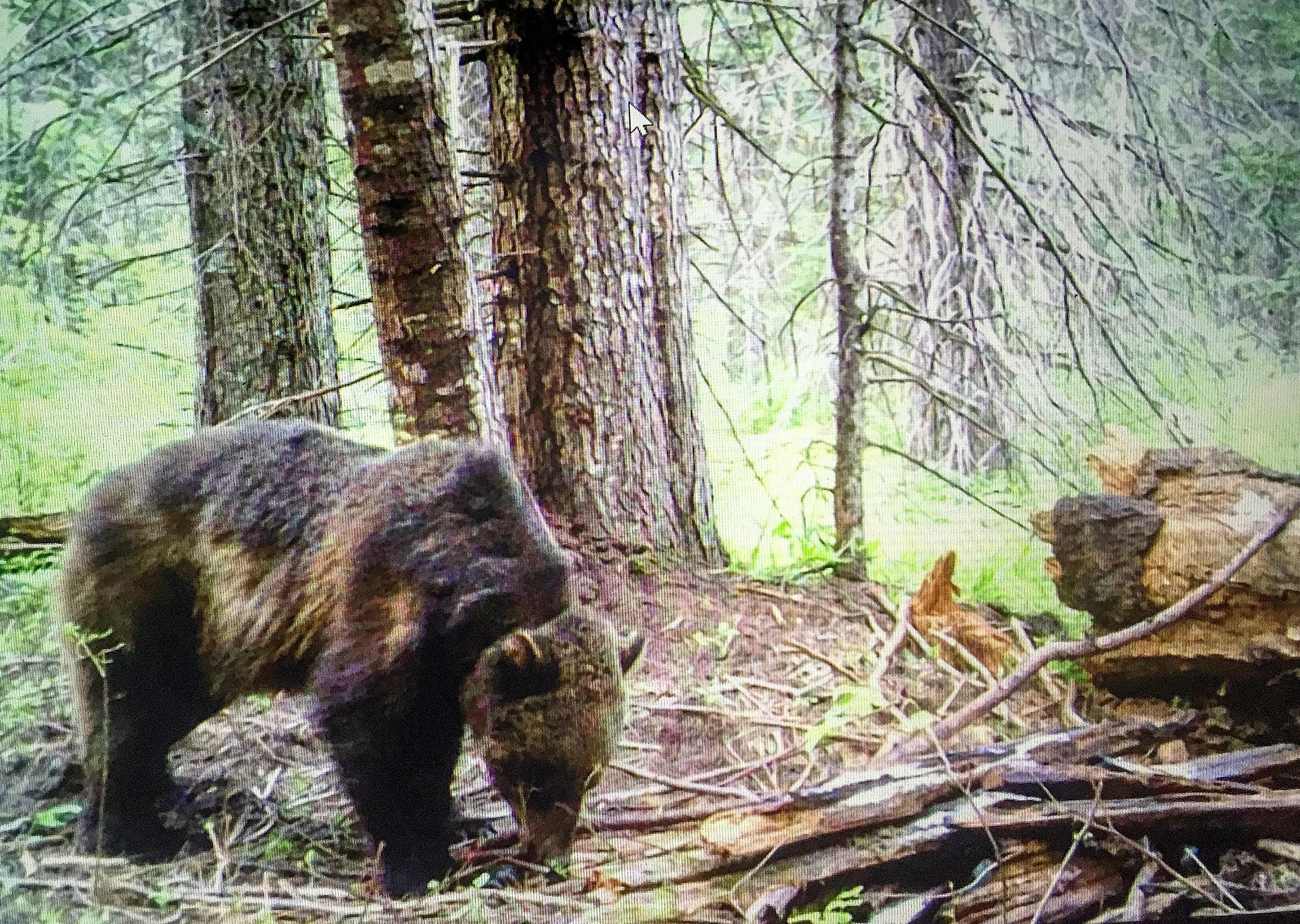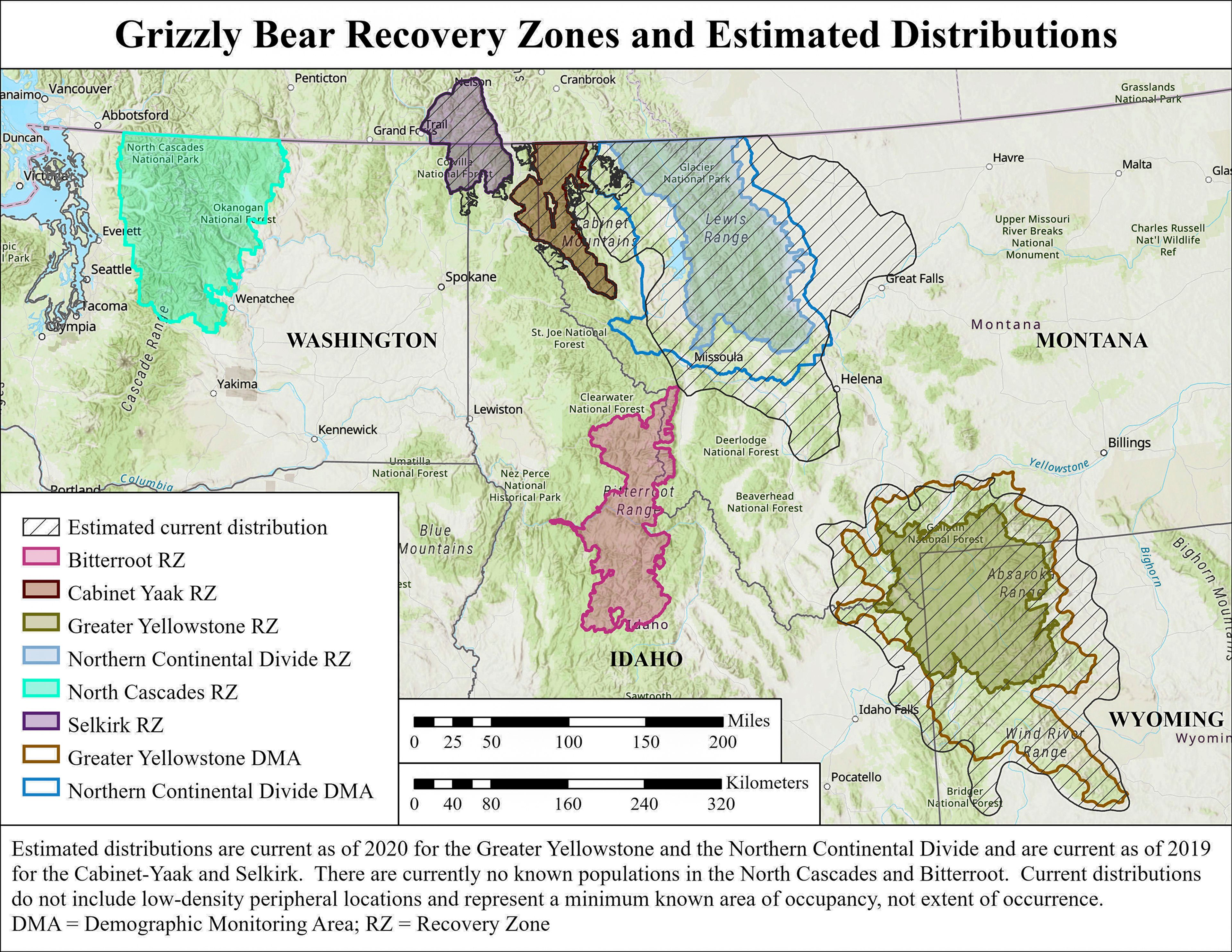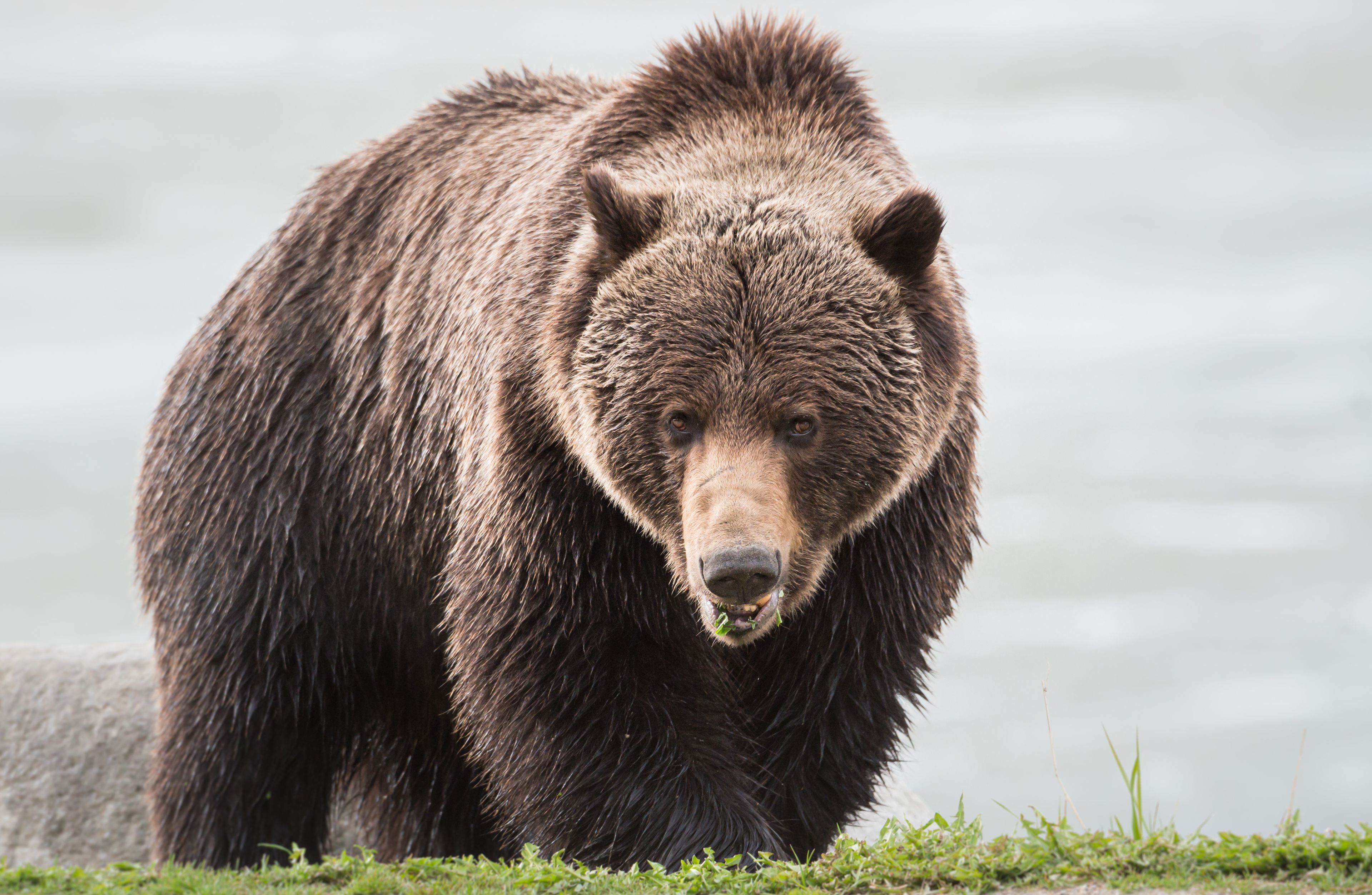Feds launch effort to update grizzly bear recovery plan in Idaho
Under court order, U.S. Fish and Wildlife Service is considering how to bring grizzlies back to Bitterroot Ecosystem
The U.S. Fish and Wildlife Service will take a new look at long-shelved efforts to recover grizzly bear populations in central Idaho wilderness areas.
The federal agency announced Thursday it is starting the process to write a new environmental impact statement on grizzly bear recovery in the Bitterroot Ecosystem that could include transplanting a small number of animals to the area. It will also consider scrapping the long-dormant plans to move bears into the Bitterroot and instead concentrate on ways to aid natural recolonization of the area.
The agency is undertaking the EIS effort under a court order. In 2021, the Alliance for the Wild Rockies and the Native Ecosystem Council sued the federal agency arguing it failed to implement a 21-year-old plan to reintroduce 25 of the great bears to the area. That plan, which was crafted in part by a coalition of environmental groups, the timber industry and labor unions, would have declared the bears a nonessential experimental population and was set to be managed by a citizen’s committee.
But it was finalized in the waning days of the Clinton administration, and was bitterly opposed by Idaho’s then-Gov. Dirk Kempthorne and members of the state’s congressional delegation. The incoming administration of President George W. Bush successfully put the reintroduction plan on ice but did not kill it outright.
Last March, the court ruled in favor of the groups and ordered the agency to update its plan to guide recovery of grizzlies in the Bitterroot Ecosystem that includes the Selway-Bitterroot and Frank Church River of No Return wilderness areas.
Grizzlies are listed as a threatened species under the Endangered Species Act. The Bitterroot is one of six zones designated for grizzly bear recovery by the federal government. The area does not have a resident population of grizzlies but in recent years individual grizzly bears have made forays into the area. A recent report commissioned by the Flathead-Lolo-Bitterroot Citizen Task Force and WildEarth Guardians estimated female grizzly bears from the Northern Continental Divide Ecosystem recovery area in western Montana could move into the Bitterroot within the next 10 years.
Last year, Idaho unsuccessfully petitioned the Fish and Wildlife Service to remove ESA protections from grizzlies throughout the Lower 48 states and has announced its intent to file a lawsuit challenging the agency’s rejection of its request. The federal agency did accept petitions from Montana and Wyoming asking it to consider delisting of grizzlies in much smaller areas around Yellowstone and Glacier national parks.
In its announcement that was published in the Federal Register on Thursday, the Fish and Wildlife Service said it intends to consider a range of grizzly bear recovery alternatives for the Bitterroot Ecosystem. That could include active reintroduction of the bears, supporting natural movement of bears into the area and work to enhance wildlife corridors between central Idaho and areas with existing grizzly bear populations. The document will consider how grizzly bear recovery could affect things like other species of fish and wildlife, human safety, recreation, tribal culture and how it may impact rural economies and land management.
The agency is in the scoping phase of writing the document and seeking comments from the public. A draft of the document is expected to be complete before the end of next year and be finalized in 2026. More information including how to submit comments is available at bit.ly/3vCEb1T.
Barker may be contacted at ebarker@lmtribune.com or at (208) 848-2273. Follow him on Twitter @ezebarker.












